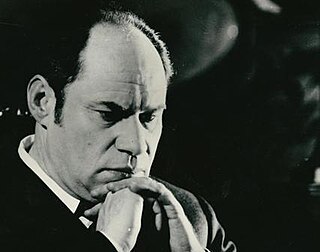
David Fyodorovich Oistrakh was a Soviet Russian violinist, violist, and conductor. He was also Professor at the Moscow Conservatory, People's Artist of the USSR (1953), and Laureate of the Lenin Prize (1960).

Emil Grigoryevich Gilels was a Soviet pianist. He is widely regarded as one of the greatest pianists of all time. His sister Elizabeth, three years his junior, was a renowned violinist. His daughter Elena became a successful pianist.

Leonid Borisovich Kogan was a preeminent Soviet violinist during the 20th century. Many consider him to be among the greatest violinists of the 20th century. In particular, he is considered to have been one of the greatest representatives of the Soviet School of violin playing.
Ilya Kaler is a Russian-born violinist. Born and educated in Moscow, Kaler is the only person to have won Gold Medals at all three of the International Tchaikovsky Competition ; the Sibelius ; and the Paganini.
Boris Emmanuilovich Goldstein was a Soviet violinist whose career was greatly hindered by the political situation in the USSR. As a young prodigy, he started violin studies in Odessa with the eminent pedagogue, Pyotr Stolyarsky and continued them in Moscow Conservatory under Abram Yampolsky and Lev Tseitlin. As a teenager, Boris Goldstein was singled out by Heifetz as being USSR's most brilliant violin talent. His brother was the violinist and composer Mikhail Goldstein. His great uncle was the physicist Eugen Goldstein.

Mikhail Izrailevich Fichtenholz was a Soviet violinist. A pupil of the eminent pedagogue Pyotr Stolyarsky, he won the national competition for young performers in Leningrad at the age of 15.

Pyotr Solomonovich Stolyarsky was a Soviet violinist and eminent pedagogue, honored as People's Artist of UkSSR (1939). He was a member of CPSU from 1939.
Semyon Snitkovsky - was a Soviet classical violinist and a professor.
Ilya Haimovich Grubert is a classical violinist and professor.

Stolyarsky School is a music school for musically gifted children established in 1933 in Odesa, Ukraine, by the violin pedagogue Pyotr Stolyarsky.
Valery Klimov was a Russian violinist.

Oscar Borisovich Feltsman was a Ukrainian-born composer of Lithuanian Jewish descent. He was the father of Vladimir Feltsman.
JulianGrigoryevich Sitkovetsky was a Soviet violinist.
Abram Ilich Yampolsky was a Soviet violin teacher who nurtured many Soviet virtuosos during his tenure at the Moscow Conservatory.

Irina Mikhailovna Baldina was a Soviet Russian painter who lived and worked in Leningrad, was a member of the Saint Petersburg Union of Artists, and is regarded as a representative of the Leningrad school of painting.

Pavel Leonidovich Kogan is a Russian violinist and conductor who was chief conductor of the Moscow State Symphony Orchestra from 1989 until 2022.

Rudolf Borisovich Barshai was a Soviet and Russian conductor and violist.
The Moscow Chamber Orchestra (MCO) is a chamber orchestra run under the auspices of the Moscow Philharmonia, a state-run enterprise, formerly under the patronage of the Ministry of Culture and now, Ministry of Culture of Russian Federation.

Stanisław Barcewicz was a Polish violinist, conductor and teacher. Although his repertoire included almost all of the classical and romantic violin literature, he was valued primarily for his interpretations of works by Henryk Wieniawski and Felix Mendelssohn. He also premiered works by his teacher Pyotr Ilyich Tchaikovsky, including the Polish premiere of the Violin Concerto in D. He played on a Guadagnini violin.
Zinaida Grigoryevna Gilels was a Soviet and later an American violinist and pedagogue.











